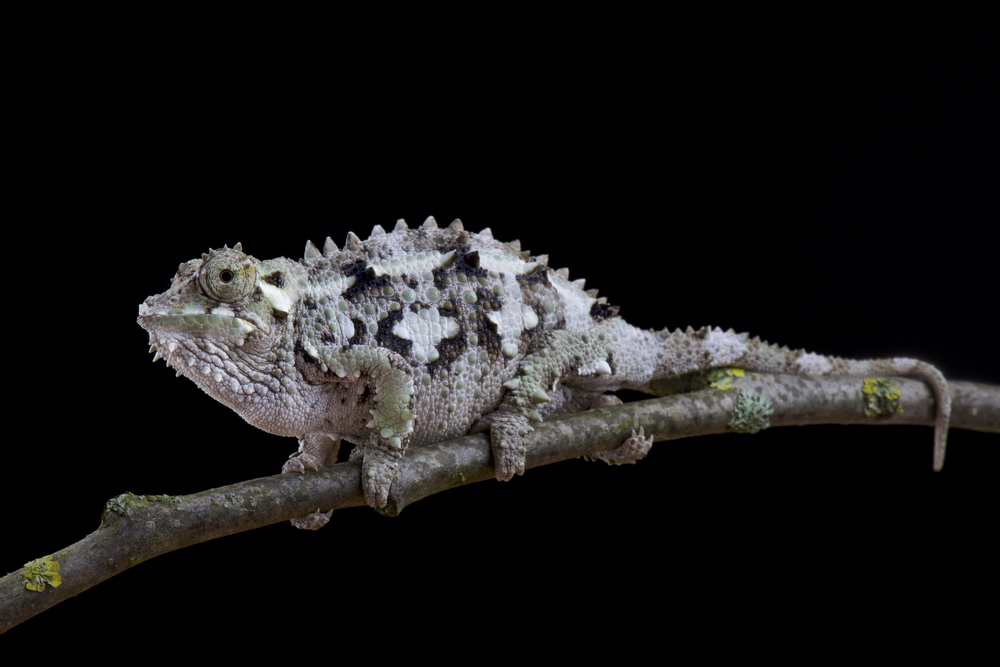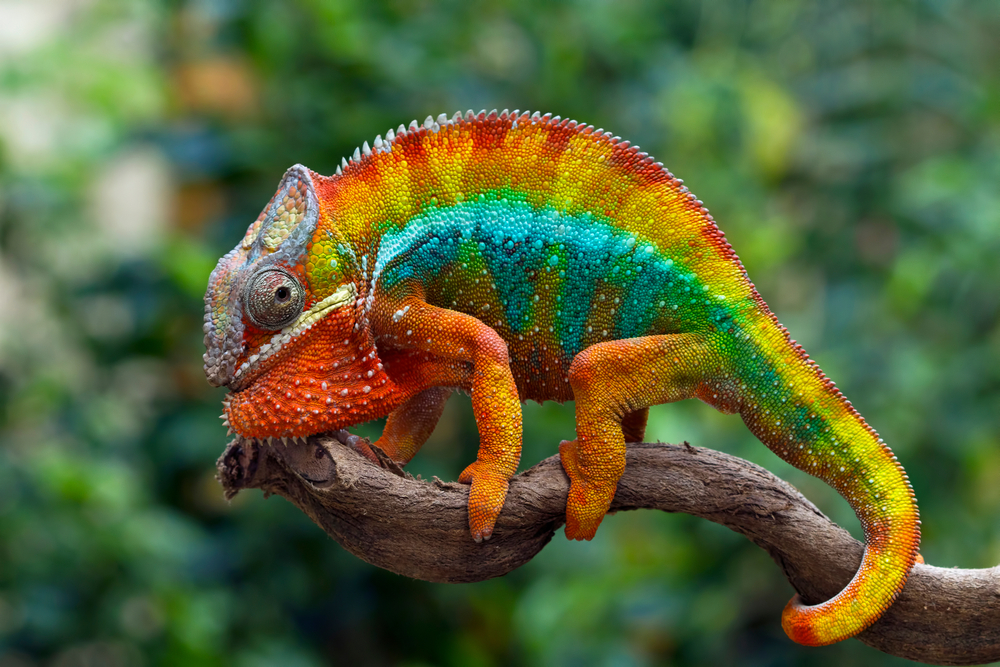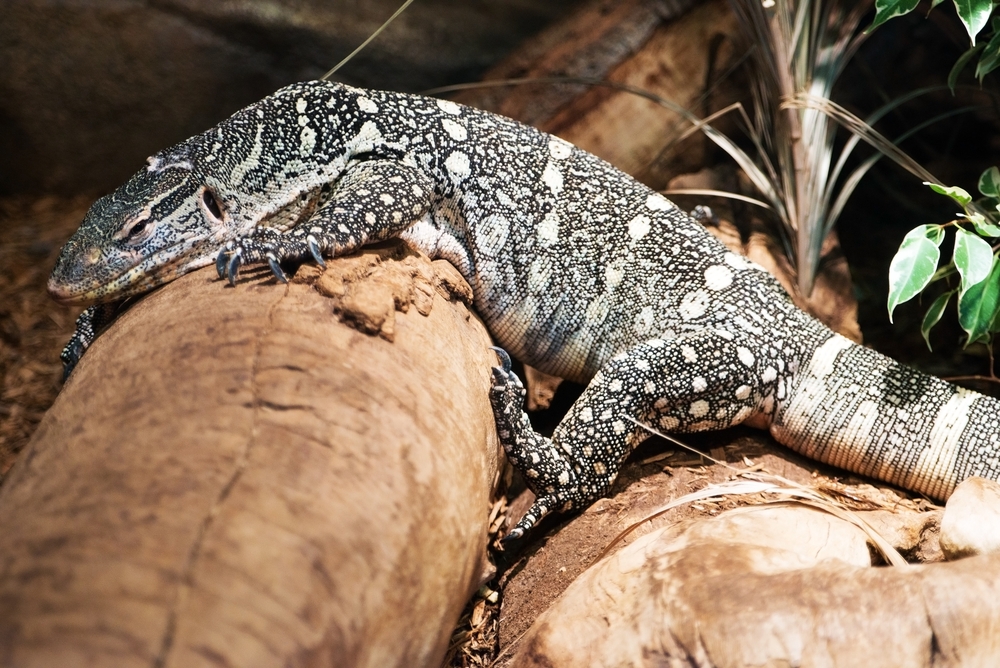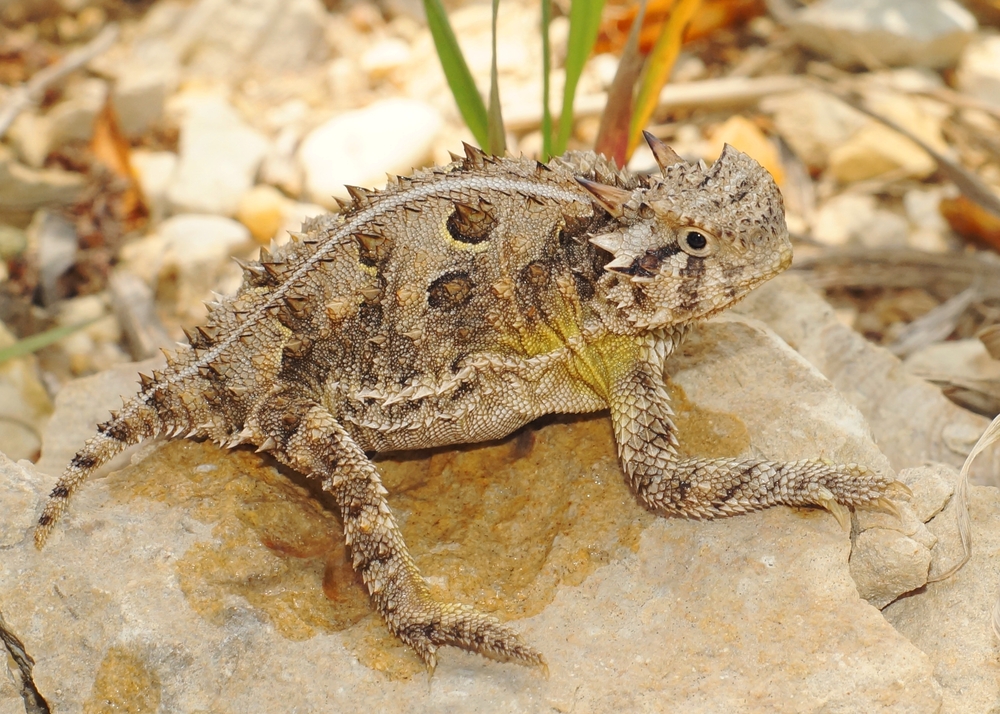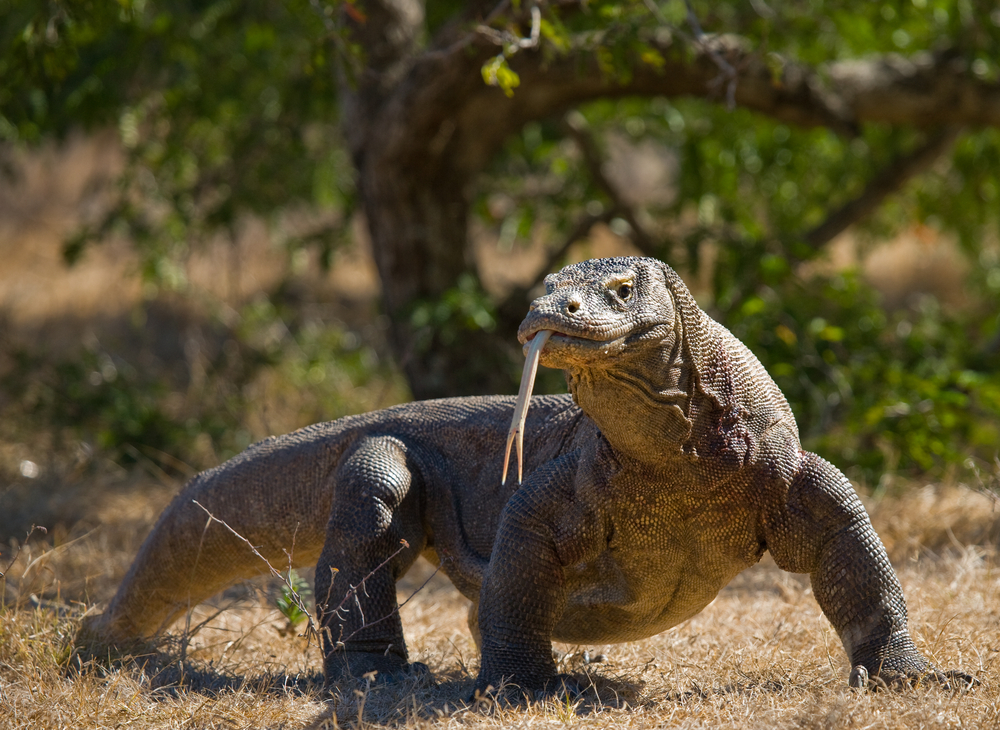Uniqueness
The Spiny-Flanked Chameleon is one of Madagascar’s most colorful and adaptable chameleons. Despite its small size and short lifespan, it stands out for its vibrant appearance, reproductive intensity, and environmental versatility.
Mosaic-Like Coloration:
This species earns its common name “Carpet Chameleon” from its intricate, patchwork-like patterns, often featuring multiple bright colors across a single individual. Females, in particular, exhibit dramatic color shifts during pregnancy or social signaling, ranging from pale green to jet black with blue, pink, or yellow spots.
Lateral Spines:
A key distinguishing trait is the row of small spiny projections running along each flank from shoulder to tail base. These spines give the species its alternate name—Spiny-Flanked Chameleon—and help differentiate it from similar-sized chameleons.
Rapid Reproductive Cycle:
Furcifer lateralis is one of the fastest-maturing and most prolific chameleons, capable of producing multiple large clutches per year. In warm, resource-rich environments, females can reach reproductive age in 4 to 5 months, a rare feat among reptiles.
Sexual Color Signaling:
Females display some of the most visually complex and behaviorally significant coloration in the chameleon world. During gravidity or stress, their vibrant black and colored patterning acts as a strong social deterrent—far more dramatic than typical female reptile signals.
High Ecological Tolerance:
This species is highly adaptable, thriving not only in Madagascar’s forests and bushlands but also in disturbed areas, including roadsides, gardens, and fallow land. Their ability to tolerate fragmented and human-influenced habitatsmakes them one of the most resilient chameleons in their range.
Popular in Captivity:
Due to their brilliant colors, small size, and short generation time, spiny-flanked chameleons are among the most frequently bred chameleons in captivity. They are often recommended for experienced keepers interested in observing chameleon courtship and color signaling behavior up close.
The Spiny-Flanked Chameleon’s intense coloration, fast-paced life cycle, and behavioral complexity make it one of the most charismatic small reptiles in Madagascar—and a living jewel in both wild and captive settings.



































































